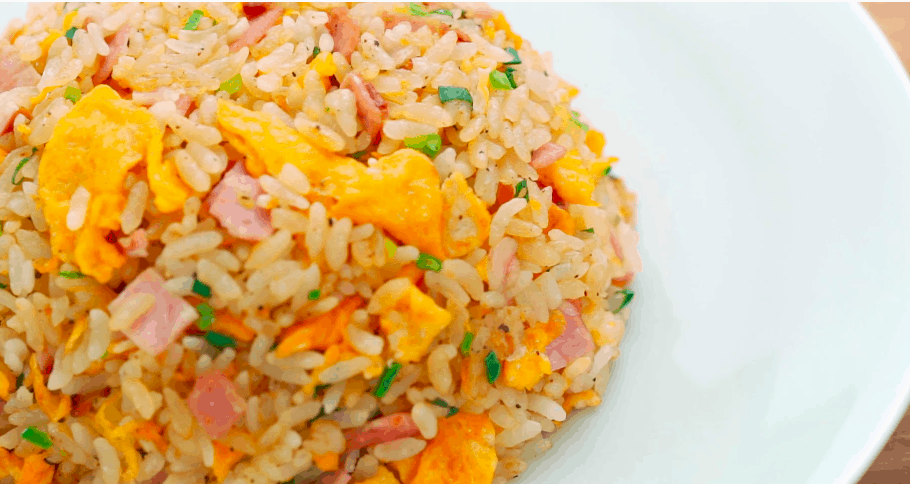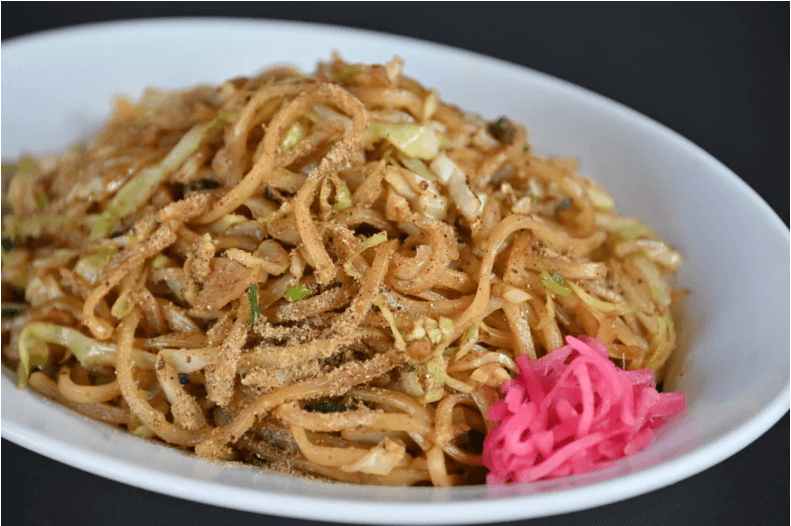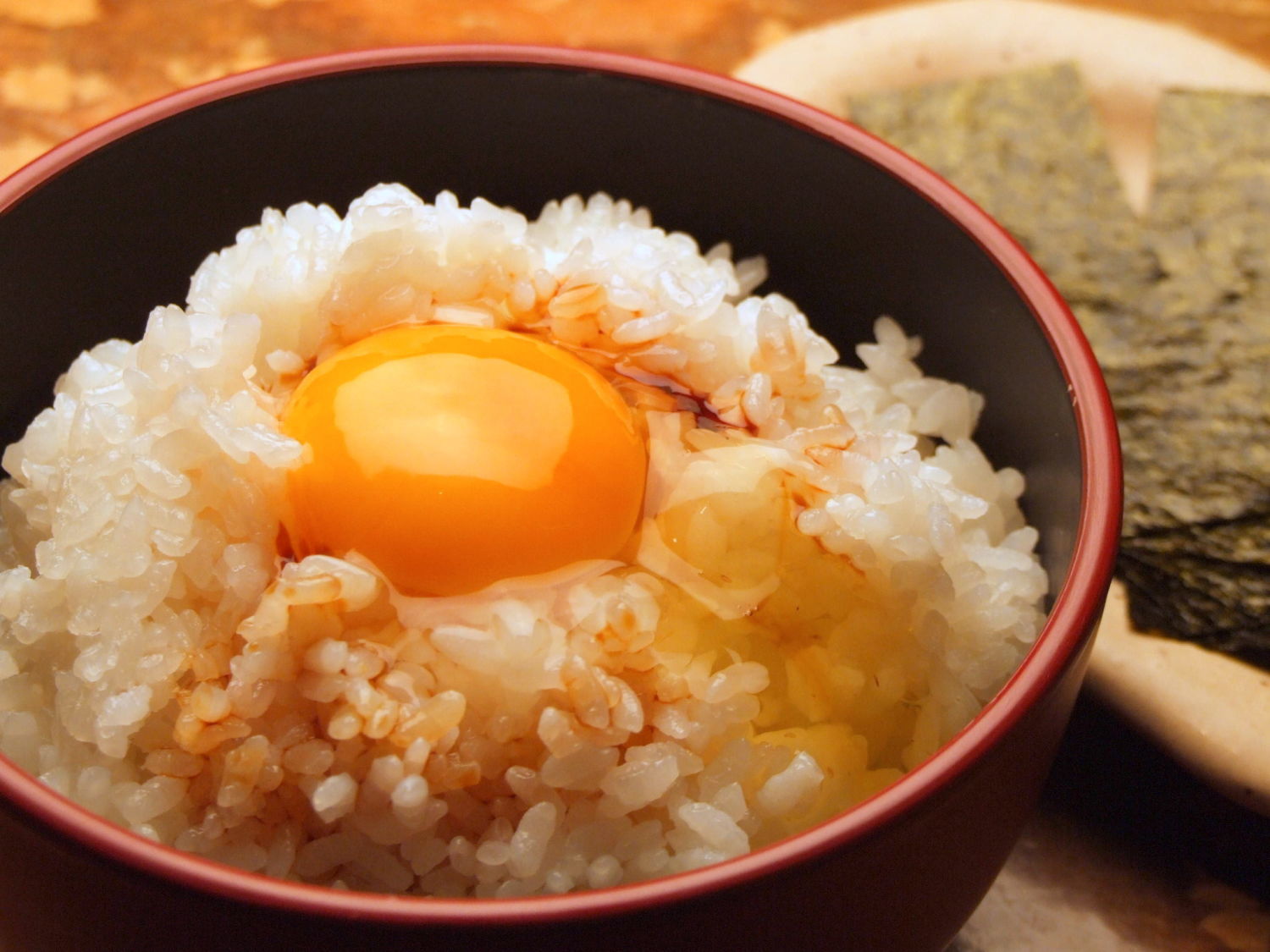
Problem — you have a bunch of leftover rice from dinner a couple nights ago. What are you going to do?
Solution — make yakimeshi!
Yakimeshi is simply the Japanese term for fried rice. It literally translates to “grilled” (yaki 焼き) “rice” (meshi めし)”. It is one of my favourite foods, and something I actually eat every week.
Easy Yakimeshi Recipe – Egg and Green Onion
This is my go-to, super simple yakimeshi recipe. It requires only 5 basic ingredients — although I usually add meat or some other leftover ingredients as well.
Recipe, technique, and images are mostly adapted from the excellent No Recipes and Spice N Pans Youtube channels. I’ll eventually get my own camera to take video/photos.
This recipe is enough for 1 person. Double it for 2 people. Triple it for three. And, so on. 🙃
Essential Ingredients
| Leftover, refrigerated rice (1-3 days old) | 1 bowl’s worth |
| Eggs | 1 |
| Green onion | 1 |
| Japanese dark soy sauce (i.e. shoyu) | approx. 1 tablespoon |
| Cooking oil | 1-2 tablespoons |
Recommended / optional ingredients
- Sausage or bacon or chashu (i.e. roasted pork) or salami or spam or ground meat (i.e. some sort of meat/ protein)
- If you want a vegetarian yakimeshi — fried tofu or any type of mushrooms would work well
- white pepper or black pepper
- garlic
Equipment required
- frying pan
- cooking spatula or wooden spoon
- Knife 🔪 + Cutting Board 🗒️
Quick version
Chop up ingredients. Heat pan and oil on medium-high heat. Cook meat / optional ingredients and set aside. Add more oil to pan if needed. Scramble eggs until 50% cooked. Put rice on top of eggs. Mix together. Break apart clumps of rice. Mix in green onions and other ingredients. Cook until rice starts popping off pan. Add soy sauce, pepper, other seasoning. EAT!
Detailed Version
Step 1: Prepare Ingredients
First, we have to dice up our green onions. Remember to practice your basic knife skills.

If you are using any other ingredients, also cut them up into small pieces. I generally like to cut things into small cubes. You can cut them into whatever shapes you want — just try to make them all around the same size so they cook evely. If you need some ideas, check out this list of Japanese cutting techniques.
Step 2: Cook meat and other optional ingredients (if applicable)
If you are using any meat, or other optional ingredients, cook them first.
Put some oil in a pan and heat it up on medium-high heat. Wait until the oil is hot, then throw your ingredients in and cook them until they are completely done. Even if using pre-cooked or cured meats like ham or salami, I still like to give them a quick stir fry first.
When your ingredients are fully cooked, take them out of the pan, and set aside for Step 5. Optionally, if you are lazy, you can also just push the ingredients to the side of the pan, then proceed to the next step.
Step 3: Cook egg until half done and add rice
Turn your stove onto medium-high heat, add more oil to the pan (if necessary), and wait until the oil is hot. There should be enough oil to cover the bottom of the pan.
Crack the egg directly in the pan, and scramble it around with your spatula.
You could also beat the egg first in a bowl, then add it to the pan, but I feel like this is just an extra step that creates more dishes to wash. So, if you’re lazy like me, then just crack the egg directly in the pan.
Cook the egg until it’s about 50% done. It should still be pretty ‘wet’ looking. You can experiment a bit and cook the egg a bit less or more, and see what you get. When you’re ready, dump your rice on top of the egg.

The reason to not cook the eggs all the way through is so that some of the egg can coat the individual grains of rice in the next step. This gives a nice texture to the completed dish.
Step 4: Mix egg and rice; break apart clumps
Quickly mix the egg and rice together. Break up any clumps of rice by pressing them with your spatula/spoon. Try not to break the individual grains of rice. Continue doing this until there are no clumps remaining, and all the grains are separated. Leftover rice from the fridge will stick together a lot, so you may have some pretty big clumps.

You could also break up the bigger rice clumps on a plate or bowl before dumping it into the pan. This also creates more dishes to wash and is unnecessary, so I usually just dump everything into the pan then break it up.
Step 5: Add green onions and other ingredients from Step 2
Once there are no more clumps of rice, throw the ingredients from Step 2 back into the pan. Then, throw in the green onions you chopped up from Step 1. Mix/toss everything together.

Step 6: Cook until rice pops. Add soy sauce and other seasoning.
Continue stirring and tossing the rice on medium or medium-high heat. Using medium heat will help prevent the rice from burning in the pan. You should also stir the rice every few seconds to further prevent burning. You will know the rice is done when individual grains start jumping off of the pan by itself. Sort of like popcorn.
Pour the soy sauce as evenly as possible around the edge of the pan and mix together with the rice. Add in pepper and any other seasoning of your choice.

Toss everything until the rice is evenly coated.

Step 7: Enjoy
Turn off the stove, and you’re done! Enjoy your homemade yakimeshi.
For fancy plating like a restaurant, first, pack the rice into a bowl, then turn the bowl over onto a plate. Garnish with some more green onions, and charge $10 to your friends.

Or, if you’re like me, just eat it straight from the pan. 🙂
Yakimeshi Notes
Why use leftover rice?
The reason for using leftover, refrigerated rice is because you want the rice to be a bit dried out. If you use normal, freshly cooked rice, then you will most likely end up with soggy, goopy fried rice. Using cooked rice that has been left in the fridge for 2-3 days is best in my opinion.
What if you don’t have any leftover rice?
No leftover rice? Unfortunately, you are going to have to wait a couple days before you can eat. Just kidding! 🤓
All you need to do is cook some rice with the usual method, but with a little less water. For every cup of rice, use a tablespoon or so less water than you usually would. When the rice is done cooking, spread it on a plate to let it cool down until it’s luke warm before using.
Japanese fried rice vs other countries
Although fried rice is probably more recognized around the world as a Chinese dish, most Asian countries where rice is a staple food have their own variations (e.g. Korea, Thailand, Indonesia, Malaysia, etc).
So, what makes Japanese yakimeshi different from Chinese fried rice (or any other country for that matter)? I guess it would just be the ingredients. For Japanese fried rice, you would use Japanese short grain rice. This results in a much different texture than Chinese fried rice which most often uses long grain. Also, you would use Japanese soy sauce vs Chinese soy sauce, etc. Other than that, the basic process is more or less the same. If you know otherwise, please let me know.
Cha-han vs Yakimeshi differences
Another way to say fried rice in Japanese is “cha-han” (チャーハン), which is adapted from the Chinese term “chao-fan” (炒飯). According to some, there is actually a difference between yakimeshi and cha-han, but it can be a little bit ambiguous.
The one clear difference is that the term yakimeshi is more often used in the Kansai (i.e. Osaka area / Western Japan), and Kyushu regions of Japan, while cha-han is more common in the rest of Japan. Some say this is because when fried rice was first introduced to Japan via China, the term yakimeshi was used to refer to grilled rice balls, so they adapted the Chinese word (chao-fan) to differentiate the two. In Kansai, grilled rice balls were not really a thing, so they just used the Japanese words.
Another difference is that yakimeshi is said to be cooked on a teppanyaki grill (i.e. flat hot plate). These grills are very common in Kansai area because of local dishes like okonomiyaki. Meanwhile, cha-han is cooked in a traditional Chinese style wok.
Lastly, some people say the difference is the order that eggs are added. For cha-han, eggs are added first, then rice. For yakimeshi, rice is cooked first, then the egg is added in. I’m not sure where or how this reasoning came about. What if eggs and rice are added at the same time?
Other possible ingredients and seasoning
You can add any ingredients and seasoning you want. Fry some garlic, and you magically have garlic fried rice! Add some hot sauce for spicy fried rice. Go crazy, and experiment to create you very own yakimeshi.
One important thing to remember is that some ingredients will release more water when cooked (e.g. mushrooms, lettuce, etc.). Therefore, it is a good idea to fully cook these watery ingredients first (i.e. Step 2) and set them aside to be added back later (i.e. Step 5 or 6). If you cook them together with the rice; your fried rice will become soggy and gross.
Add ketchup!
Sometimes I like to mix my finished yakimeshi with ketchup. It’s f*cking delicious. Don’t knock it ’til you try it.
Restaurant fried rice vs. home cooking
😶

Conclusion
Fried rice is awesome. You take some leftovers, throw it in a pan, and you have a delicious meal that is better than the sum of its ingredients. I make yakimeshi at least once or twice per week because I always have leftover rice.
There are a million different techniques and recipes for making yakimeshi / fried rice. The above method is just my preferred way. Some people add the egg first; some people add the egg last. Some people mix the egg and rice together before putting it in the pan. Some people fry the egg and put it on top of the rice. Some people don’t use eggs at all!
You can do whatever you want. That’s the beauty of fried rice. 😎
What is your favourite type of yakimeshi? Let me know in the comments!
Subscribe for free today! Receive cool recipes, my latest Japanese knife picks and learn about Japanese culture. Delivered every other week to your inbox.


Thanks for sharing. I read many of your blog posts, cool, your blog is very good.